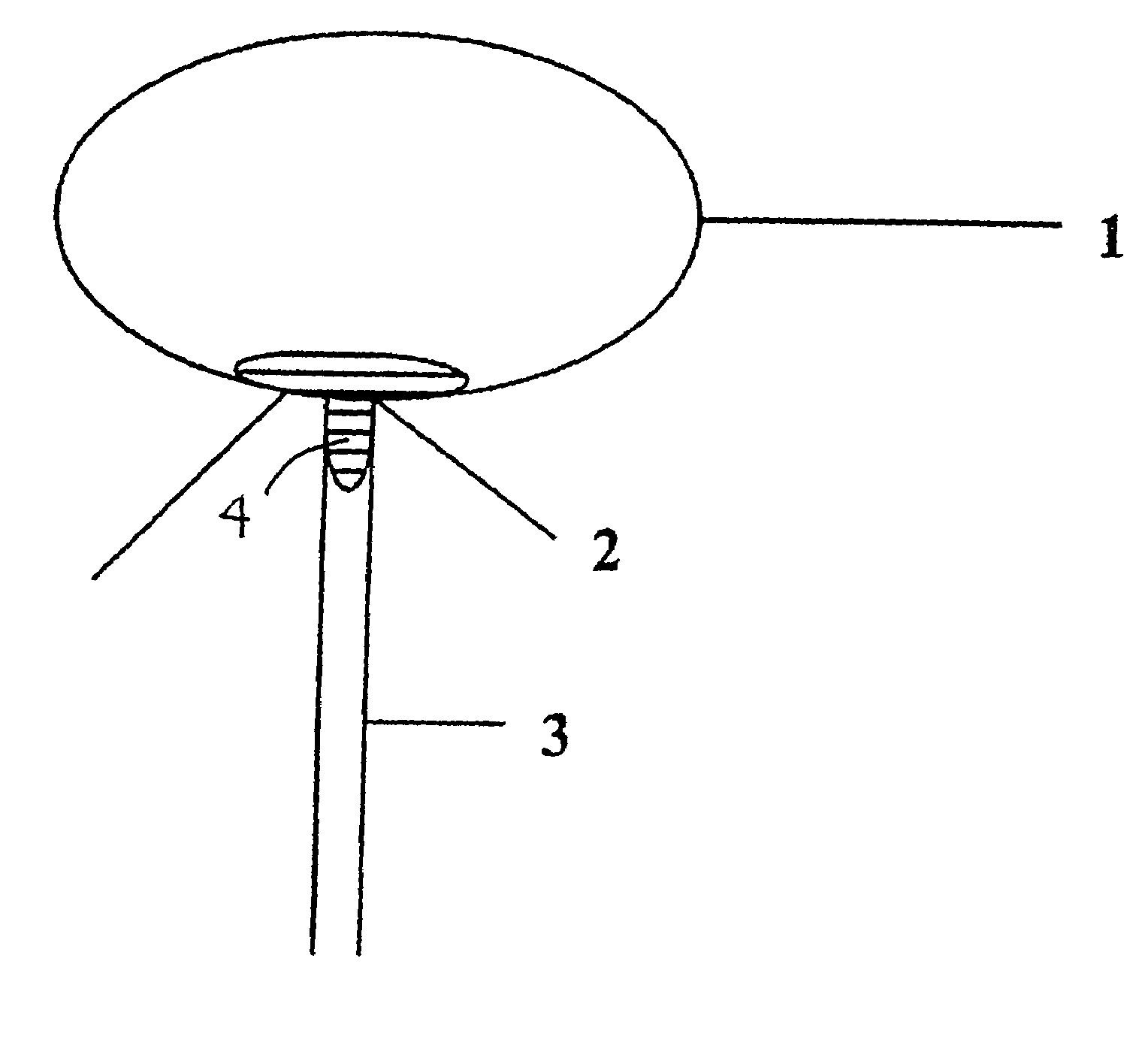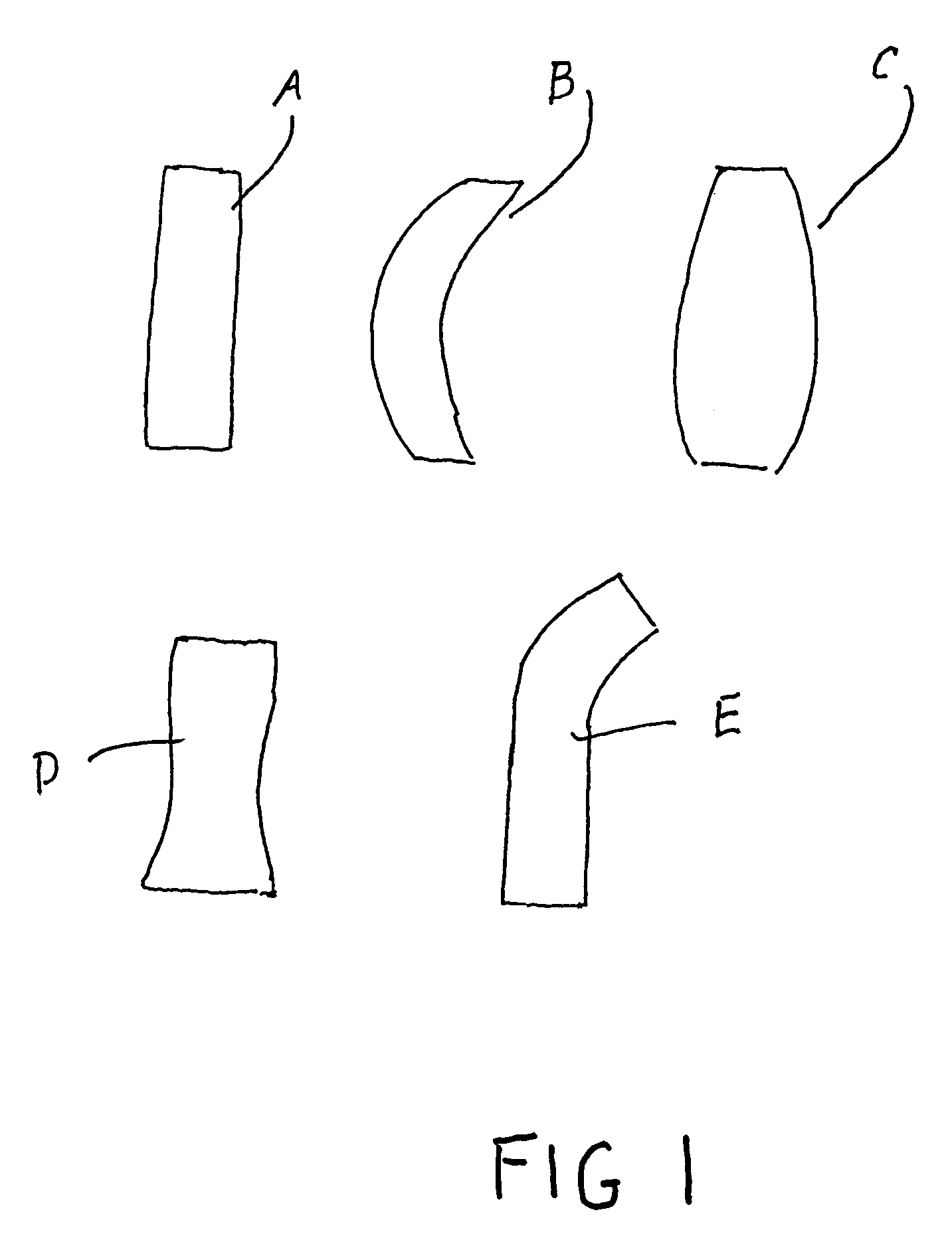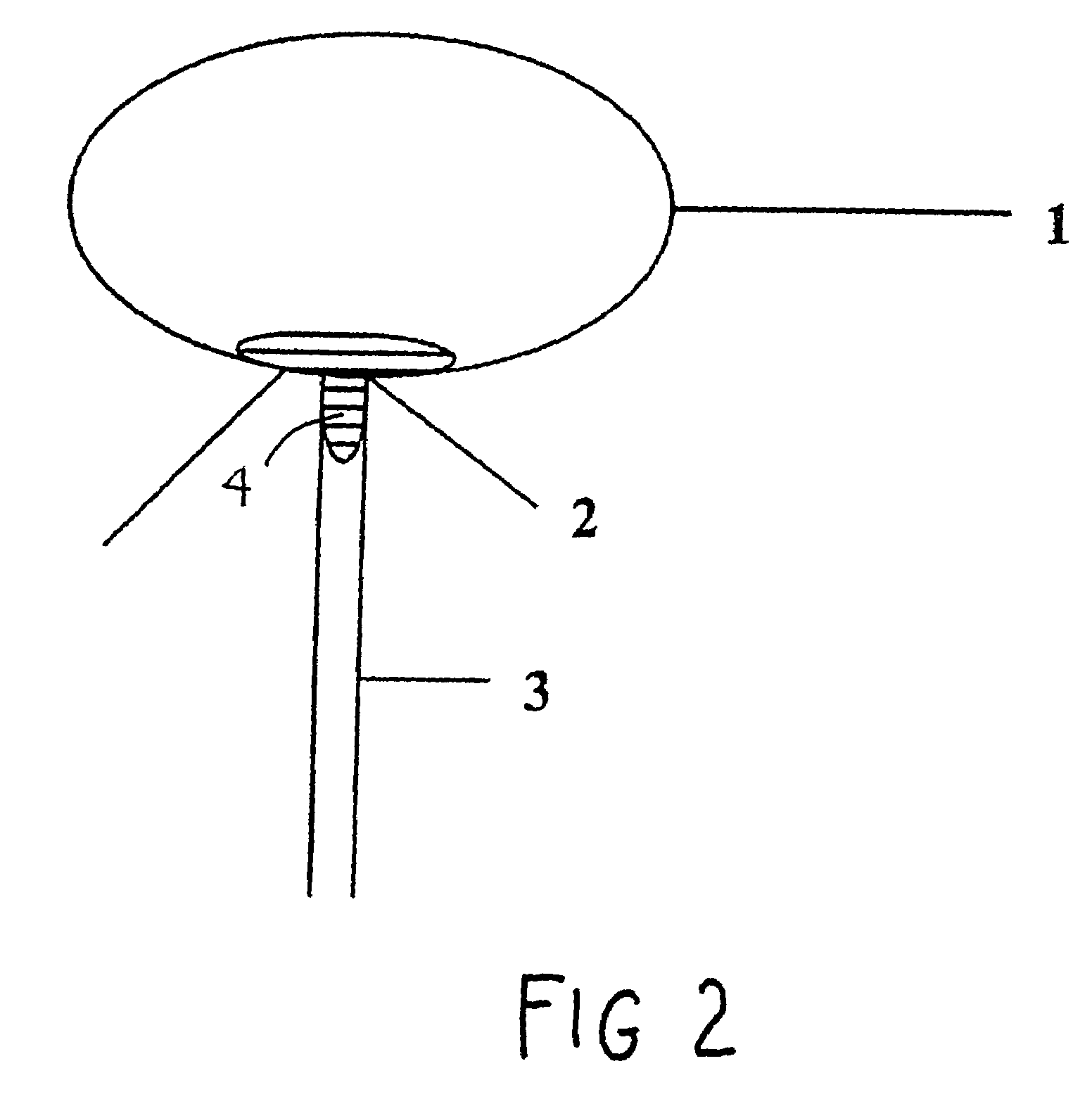Method for fluid control in medical applications
a technology for medical applications and fluids, applied in the field of sponge apparatuses, can solve the problems of dysfunction and the requirement for diaper use, and achieve the effect of restricting the spread of toxins
- Summary
- Abstract
- Description
- Claims
- Application Information
AI Technical Summary
Benefits of technology
Problems solved by technology
Method used
Image
Examples
Embodiment Construction
[0040]FIG. 1 shows a plurality of sponges A-E according to the invention. The sponges A-E have shapes adapted for the particular anatomical structure in which they are to be inserted. The shapes of the sponges which have been illustrated are merely exemplary. A greater number of shapes of the sponges can be adapted to the particular anatomical structure.
[0041]As particularly illustrated, sponge A is essentially cylindrical; sponge B is of curved cylindrical shape; sponge C has a wider aspect in its central region; sponge D narrows in its central region; sponge E is a composite of a straight cylindrical portion and a curved cylindrical portion.
[0042]Each of the sponges of different shape has a range of porosity varying from one extreme to provide occlusion to another extreme to provide free flow. The mode of varying the porosity of the sponges is well known to those skilled in the art and is not discussed in detail herein.
[0043]The sponges are made of a material inert to humans. The ...
PUM
 Login to View More
Login to View More Abstract
Description
Claims
Application Information
 Login to View More
Login to View More - R&D
- Intellectual Property
- Life Sciences
- Materials
- Tech Scout
- Unparalleled Data Quality
- Higher Quality Content
- 60% Fewer Hallucinations
Browse by: Latest US Patents, China's latest patents, Technical Efficacy Thesaurus, Application Domain, Technology Topic, Popular Technical Reports.
© 2025 PatSnap. All rights reserved.Legal|Privacy policy|Modern Slavery Act Transparency Statement|Sitemap|About US| Contact US: help@patsnap.com



